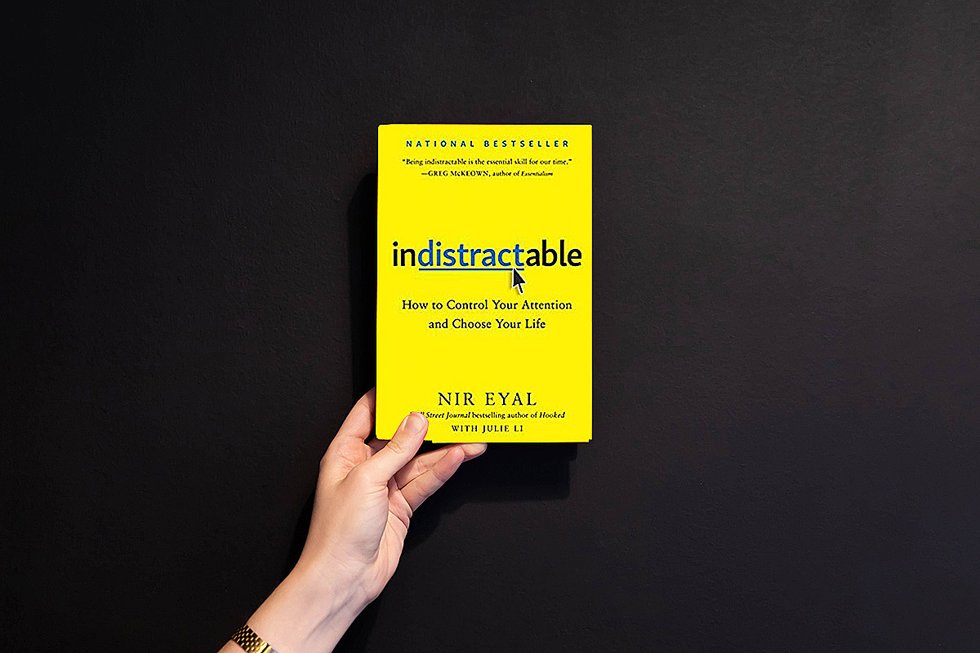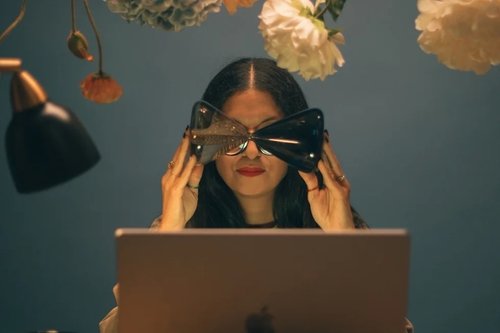How to avoid distractions at work
17 feb 2020
5 min

AD
Fondateur, auteur, rédacteur @Word Shaper
Did you just spend way too much time scrolling through your phone and now you’re regretting it? We’ve all had to deal with that unpleasant feeling after wasting time on an activity that wasn’t really worth it. But it seems hard to avoid in daily life, especially when everything is designed to catch our attention.
Today, these ever-increasing distractions take the form of either notifications or adverts that undermine our ability to focus. Learning to avoid them means being able to distinguish what’s good for your own development and the actions that keep you from reaching your goals. In his book, Indistractable: How to Control Your Attention and Choose Your Life, Nir Eyal explains why we are compelled to act against our own best interests and helps us to change this dynamic. In other words, how to stop giving into distractions.
The psychology of distraction
Five years ago, Nir Eyal, an expert in behavioural design, published the bestseller Hooked: how to build habit-forming products. In this book, he analysed the success of businesses that design products which create new behavioural habits. A typical example is the smartphone. This device introduced habits that are now established behaviours, such as geolocating, taking and sending photos instantly, checking Google in the middle of a conversation and so on.
A distraction is, above all, an object—material or otherwise—that steers us away from a goal. The opposite of this, according to Eyal, is traction: an action that gets us closer to the fixed objective. Everything we do is determined just as much by internal factors—“I’m hungry so I’ll eat”—as external ones—“my telephone is sending me a notification so I’ll answer my emails.” The more distractions we have, the less we are able to focus our attention on the tractions. But distractions, whichever form they take, have always existed and that won’t change anytime soon. The goal is then not to ban them, or to advocate completely avoiding them, but rather to manage distractions in the best possible way.
As the author explains, it’s important to understand from a psychological standpoint why we give in to distractions: not for the pleasure that they bring us, but to get rid of the feeling of desire. It can be unpleasant, frustrating or even painful to want something really badly. It’s simply easier to give into the siren call of a push alert than to avoid your Facebook account for the rest of the day. But all of the things that relieve this uncomfortable feeling of desire have the potential to become addictive, which makes it difficult to manage them on a daily basis. So how do you go about it?
Get planning
In his book, Eyal discusses the importance of planning your days. If you clearly label your objectives, this allows you to define distraction by opposition and thus eliminate it. If we don’t set objectives and tasks to accomplish for the day, week or month, nothing is a distraction. Watching TV for hours on end doesn’t distract you from your goal because you never set one! The author recommends creating a calendar in advance to divide your time between work, your social life and yourself in a way that reflects your values. Everything not written down therefore becomes a distraction.
Of course, modify the schedule over time, but the idea is to stick to it once it’s adjusted. This will help you draw a clearer distinction between the distractions and the tractions in your life.
The four steps to manage intrusive thoughts
In Indistractable, Eyal discusses the four steps necessary to stop you getting distracted by thoughts and intrusive desires such as “I want to smoke a cigarette” or even “I want to check out Instagram.”
1. Analyse the annoyance that set off the distraction.
2. Give whatever set off the distraction a name and write it down. The author suggests writing down details of the time you wanted to do something else and what you were doing at that moment, then specifying what you feel, both physically and mentally.
3. Focus on those feelings. Did your hands twitch when you wanted to look at your phone? Did you feel something in your chest when you were on the verge of being distracted? It’s important to familiarise yourself with these feelings, to let them manifest and then disappear rather than react impulsively and stop them.
4. Pay attention to transitional moments. For example, if you open Google to do a search but it’s slow to load, you might be tempted to open another page to read an article while you wait. But you’ll continue reading the article once the search page has loaded. What should take only a couple of seconds might now take you a half an hour.
Eyal also recommends familiarising yourself with the ten-minute rule. The concept? When you feel like something is distracting you, try to tell yourself, “Ok, I’ll let myself have a snack in ten minutes.” Ten minutes is typically enough time to feel that desire fade, which means that you avoid the distraction.
Make it a game
Why do you get distracted so easily? It’s often because distractions are a way of momentarily breaking tasks and activities up that seem boring because you associate them with external constraints. The author suggests looking at your objectives in a new light, by playing a game with yourself. In this way, for each difficult or laborious task, you’re always able to challenge yourself.
This challenge is interesting because it offers several advantages: the chance to refresh your perspective, to create more investment in your actions and to maintain concentration. The best way to stay stimulated and inject a little creativity into what may sometimes seem boring or monotonous is by imposing constraints on yourself. Use a maximum number of new vocabulary words in an article, measure how much time you could spend learning a language if you reduce your social media access, count the number of projects you could wrap up in a morning of deep work. The examples are plentiful!
How to fend off external distractions at work
Alongside internal distractions, there are numerous distractions that originate externally, especially at the office. When you’re frequently distracted at work, you run the risk of making mistakes and losing track of good ideas. It might be a colleague who’s a bit too chatty or neverending notifications—how do you put an end to these non-stop distractions? Eyal has several ideas for minimising them.
Whether you’re in an open-plan or private office, the author suggests finding a code to signal to your colleagues that you don’t want to be disturbed. This could be a photo, a colour code, a poster or something else. Nir Eyal also suggests communicating about your work in a transparent way to both your superiors and your colleagues. This will help to minimise unnecessary distractions.
Company culture is also important to discuss: are weekly meetings necessary or are they a distraction to everyone’s progress? Should the constant flow of company Slack chats be reconsidered? Which tool could be introduced for more relevant internal communication?
On an individual level, it’s up to you to limit distractions from your mobile phone. Eyal recommends sorting out your apps. It’s up to you to adjust the push settings for each one and use the “do not disturb” function on your phone!
Nir Eyal’s book feels encouraging when it comes to relearning how to get rid of stimuli, both internal and external. The behavioural expert offers solutions for improving productivity at work but also for improving quality time for yourself and with others. By clearly defining your objectives, you can choose actions that move you forward and reduce the time spent on those that hold you back. Becoming indistractable is ultimately a great way to find your social and creative potential!
Translated by Kalin Linsberg
Photo: WTTJ
Follow Welcome to the Jungle on Facebook and subscribe to our newsletter to receive our best articles.

Más inspiración: Productividad y herramientas

How productive are you, really? Unlocking productivity in the workplace
How does the traditional 8-hour workday measure up to actual productivity levels?
03 abr 2024

Ego depletion: The more decisions you make, the worse they become!
Digital demands and information overload are at an all-time high, making decision fatigue a critical challenge impacting productivity and well-being.
27 mar 2024

Say goodbye to your to-do list and hello to the ‘did’ list
Wave goodbye to the overwhelming to-do list and welcome the empowering 'did' list into your daily routine.
27 mar 2024

Should you secretly use AI at work?
Policies surrounding AI usage at work are becoming more and more popular—but some workers are choosing to ignore them.
19 feb 2024

I tried splitting my day into fun and boring tasks. Here’s what happened…
Some experts suggest balancing enjoyable and difficult tasks is a shortcut to workplace happiness. Here’s how it worked out for our reporter…
28 jun 2023

¿Estás buscando tu próxima oportunidad laboral?
Más de 200.000 candidatos han encontrado trabajo en Welcome to the Jungle
Explorar ofertas